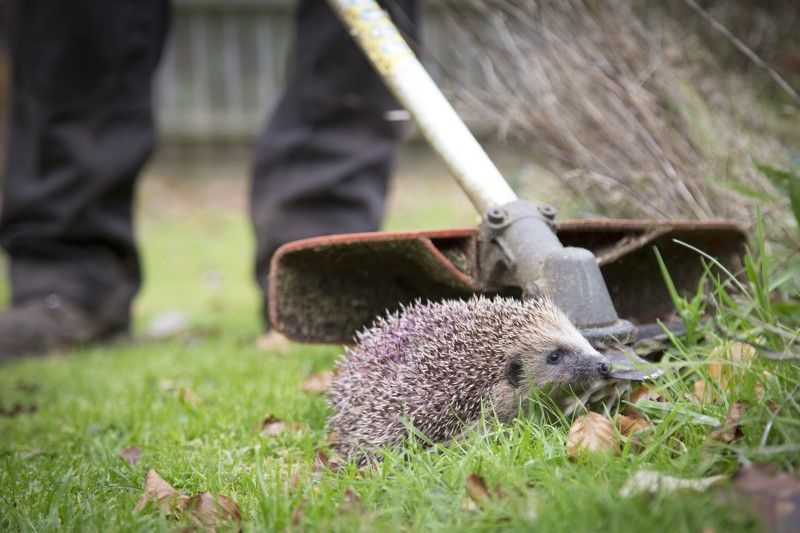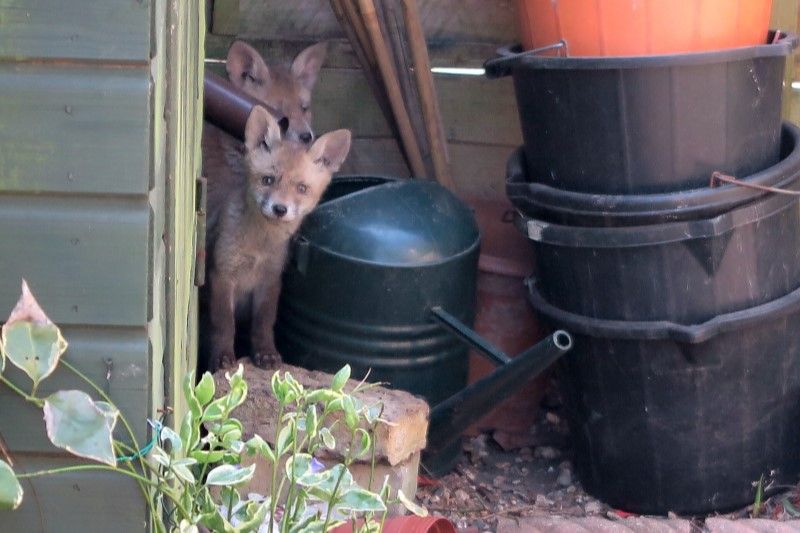While we can do a lot to encourage wildlife in urban green spaces and improve the green health of our towns and cities, it’s also true that, for some, it can be a jungle out there.
Without thinking, we can easily create unintentional hazards around gardens and allotments. Removing these can make these spaces a whole lot more wildlife-friendly.
Water is both life-saving and a danger
A source of water is important for many animals, and ensuring there’s something to drink (from a shallow dish or bird bath) is an easy way to help. Ponds, too, aside from doing wonders for biodiversity, are an excellent drinking and bathing spot for wildlife. However, if their sides are steep and smooth, there is a risk that, once in, animals won’t be able to get out and can tire and drown. Hedgehogs are a common casualty and other species, such as newts and frogs, can also become stuck in this way. Putting a few bricks or stones up the side, or a wire-mesh ramp, makes a suitable exit.

Water butts, if left uncovered, can also be a hazard for squirrels and wood mice if they fall in, and stag beetles can similarly drown. A secure-fitting lid prevents any casualties.
Compost heaps and strimmers
Hedgehogs face another threat in the form of garden strimmers. In summer, hedgehogs nest in long grass during the day and while other species will move away if disturbed, hedgehogs roll up into a defensive ball. This makes them prone to injuries from strimmers, which can cause severe lacerations and even the loss of limbs. Before strimmimg long grass, it’s a good idea to sweep through with a stick or gloved hand to ensure there are no concealed hedgehogs.
Be careful turning over compost heaps, which can conceal hedgehogs and toads that might be speared accidentally.

Canes, netting and bonfires
Foxes and domestic cats can face a particular hazard jumping down from fences or shed rooves. Animals can be injured on canes or plant supports positioned at the base of these, and perhaps hidden by foliage. Securing a cork or something similar to the end of a cane reduces the risk.

Another garden hazard to remember is discarded netting or netting that’s poorly secured. Whether covering your brassicas or an old net that once saw the garden badminton final, animals can easily become entangled in netting if it’s left lying around or becomes loose. Tidy away any unused netting and, where it is used, make sure edges are fastened securely.
A pile of logs or brushwood makes an excellent microhabitat – a bug hotel, replete with fungi and spiders – that can provide song perches for birds and a hideaway for wood mice. But if you’re clearing some space or celebrating the Gunpowder Plot, a bonfire is called for. It’s best to collect the wood shortly before lighting it, rather than using wood that’s been in sitting in one place for a long time and more likely to be home to small mammals. Hedgehogs particularly can take up residence, looking for a place to hibernate in winter. Slide a stick into the base of the pile and give it a wiggle to disturb any animals that might be there and encourage an exit.
Gardens, however big or small, beautifully designed or ‘naturally arranged’, can bring biodiversity to our towns and cities. They’re not without hazards either, but nothing that can’t be avoided with a little thought.
Many thanks to Linda Austin for inspiring this piece.
For tips on how to create a wildlife-friendly garden, from planting for pollinators to how to build a pond, see our gardening guides. And to get involved with our mammal watching surveys, take part in Living with Mammals today:
Header photo credit Judy Staines
